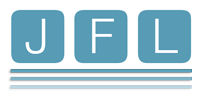The Syrian war, during all of its phases, along with the accompanied systematic violence policies and actions that were performed either by the Syrian government or the “Islamic State”, in addition to the aerial bombardment that was launched by anti-IS coalition or the Russian warplanes, which almost targeted the civilian areas in the governorates of Deir Ezzor and Al Raqqa, caused influx of displacement during frequent intervals.
As the crisis of displaced people was the most prominent problem of the Syrian war, the problem of the displacement of Deir Ezzor populations was one of the most complicated and miserable one since it was resulted from the complicated phases that the governorate faced since the very beginning of the war along with the accompanied tribal and military conflicts, religious ideological organizations, that ended by the emergence and control of Islamic State group on it. The Islamic State group practiced a religious and ideological custody on the locals and imposed patterns forcibly. Additionally, the aerial bombardment of US-led coalition and the Russian warplanes. These events produced three waves of displacement of the locals inside Syria since the mid-2012, and the most suffering one was the last. Moreover, the country entered a geopolitical phase where local, regional, and international control areas are emerging and undergoing contradictory wars. This increases the suffering of the displaced in terms of their movement and reach to more safe areas.
Despite the unavailability of accurate statistics for the displaced people of Deir Ezzor governorate, we at JFL could determine their locations in Idleb and Hasakeh by an initial survey. Then, we depended on the questionnaire that we have circulated in these two provinces along with interview with the local councils’ members in Idleb and the information of our reporters in Idleb and Al Hasakeh. JFL could not conduct survey in the government-held areas due to security reasons. A survey was conducted in Idelb; Sarmada, Harem, Salqeen, Al Dana, and KAfr Darian, along with the self-rule held areas, Al Hasakeh and Qamishli as a questionnaire covered 25-40 families in each area. A total of 400 families were questioned by the survey in the different targeted areas.












